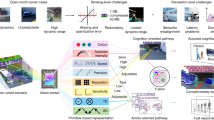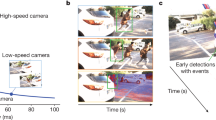Abstract
IN his paper on the registering microphotometer, P. P. Koch (Annalen der Physik, iv. 39, p. 705, 1912) describes an arrangement consisting of two similar photoelectric cells connected to an electrometer, both illuminated by the same source, but through different optical paths. The arrangement described has the advantage of being independent of intensity fluctuations in the source (provided that these are uniform over the area of the source), since the electrometer reading depends only upon the ratio of the intensities falling on the two cells. An example is given in which a change from 10 to 100 in the light intensity of the source produced only a 1 per cent, change in the electrometer deflexion. However, it remained impossible to use arcs, or other light sources which not only fluctuate in intensity but also flicker or change their position; for since the two beams come from different parts of the source, and traverse different optical paths, flickering changes the ratio of their intensities, as well as the absolute values.
This is a preview of subscription content, access via your institution
Access options
Subscribe to this journal
Receive 51 print issues and online access
$199.00 per year
only $3.90 per issue
Buy this article
- Purchase on Springer Link
- Instant access to full article PDF
Prices may be subject to local taxes which are calculated during checkout
Similar content being viewed by others
Author information
Authors and Affiliations
Rights and permissions
About this article
Cite this article
KURRELMEYER, B. The Use of Arcs and other Fluctuating Sources in Photoelectric Photometry. Nature 117, 657–658 (1926). https://doi.org/10.1038/117657a0
Issue Date:
DOI: https://doi.org/10.1038/117657a0
Comments
By submitting a comment you agree to abide by our Terms and Community Guidelines. If you find something abusive or that does not comply with our terms or guidelines please flag it as inappropriate.



